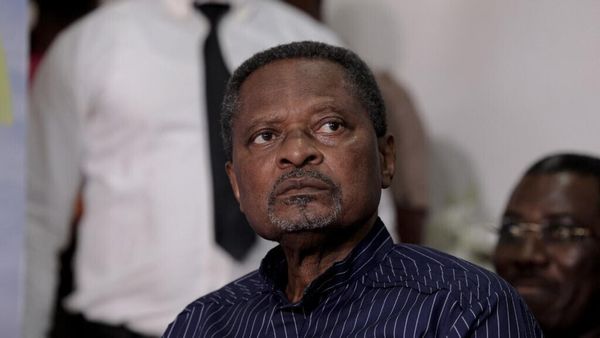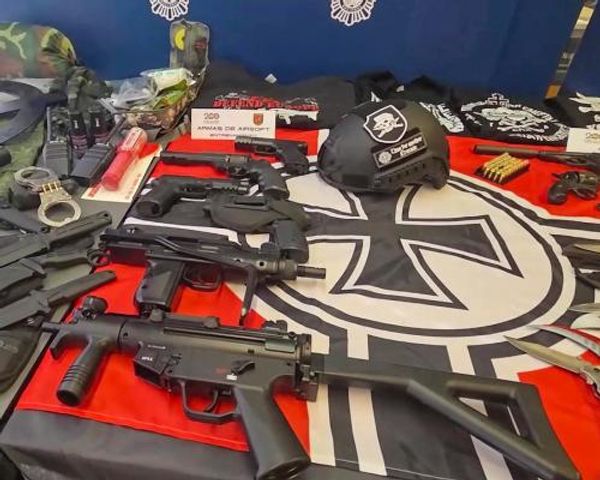

As conversations about a potential salary cap or floor in Major League Baseball continue to rage on, the NFL is quickly approaching the start of its 2025 season. That means two things: Preseason football is in full swing, and Madden 26 is out. Luckily for us sports freaks, Madden 26 gives us the option to turn the salary cap off, giving us a virtual glimpse at a world where the purse strings in the NFL aren’t just loosened, but severed.
To get a better understanding of how this would affect the league, not only would everything be set to AUTO in the Franchise mode save, but we also simulated five seasons into the future to determine which teams experienced prolonged success in this new era, and which teams would be crushed. It also gave the simulation a chance to adjust to everything and let things truly play out over a semi-long timeline.
Year 1: The Disruption Begins
Predictably, the first season didn’t feature much in terms of surprises. At least, not at the top of the league. The Philadelphia Eagles and Baltimore Ravens both finished towards the top end of the standings in their respective conferences. That said, there were some teams that provided some competition due to their having no restrictions on how much money they could spend.
Because contract disputes are now more a case of “do we want you badly enough” more than they are “can we afford this player while pursuing other options,” the Cincinnati Bengals were able to give star edge rusher Trey Hendrickson a 2-year, $60.6 million deal. They also gave a big contract to CB Cam Taylor-Britt, effectively keeping their two best defensive players in the fold. This paid dividends for the Bengals, who finished 14-3 and won the AFC North, despite the Ravens posting an equally impressive 13-4 record.
The New England Patriots also became a surprise contender, posting an equally great 12-5 record and running away with the AFC East in the process. A lot of that came down to an impressive season from QB Drake Maye, but it also came down to the acquisitions of middle linebacker Jerome Baker from the Bwons (and subsequent contract extension), as well as a midseason signing of DT Adam Butler.
Even the New York Giants found some success under this new cap-free system, posting a 10-7 record and making the playoffs. Funnily enough, they didn’t seem to spend big, despite being a big-market team with plenty in the financial coffers. Instead, the Giants only made a few small signings to either add a few reinforcements, such as defensive tackle Greg Gaines, or retain stars Cor’Dale Flott and Micah McFadden.
These were some fun developments, without a doubt. But surely, nothing too crazy would happen in the playoffs that would turn the league on its head, at least not this early. Wrong!
Despite being the Super Bowl favorite at the start of the playoffs, the Eagles were out in the Divisional Round, losing to the Green Bay Packers by three points. The Seattle Seahawks made it to the NFC Conference Championship, where they subsequently lost to the Packers.
While certainly not the favorites to make it to the Big Dance, the Packers finding their way into the Super Bowl game wasn’t too far-fetched — they’re a pretty good team in real life. But over in the AFC, chaos reigned.
When the playoffs first began, the Pats, Denver Broncos, Los Angeles Chargers, Kansas City Chiefs, Houston Texans, Baltimore Ravens, and Cincinnati Bengals were in. Outside of the Patriots (and the Buffalo Bills being nowhere to be found), none of these teams were really out of place. But once the simming started, it quickly got out of hand.
In the Wild Card round, New England outlasted Denver 23-17. And in the Divisional round, they squeaked out a victory over the Chargers to make it to the Conference Final, where they’d face the Ravens and surely be outclassed, right? Nope, they narrowly beat Baltimore 29-27, setting up a Super Bowl clash with the Packers.
Ultimately, the Packers would win the game 28-20. But the seeds had been planted for a save that could potentially blow minds.
Year 2: The New Breed
Year one of the simulation brought its surprises, but it paled in comparison to the second season of the simulation.
While some of the usual suspects were in the mix — the Bengals and Ravens, as well as the resurgent Bills — year two brought the biggest surprise yet: The Chicago Bears weren’t only back in the playoffs, but Caleb Williams had an MBP-caliber season. In just the second year of the simulation, Williams threw for over 5,000 yards, threw 40 touchdowns (and just 5 interceptions), completed 72% of his 601 attempts, and had a QB Rating of 116.1. He had also developed into a 97 OVR player.
This is also where I realized that I hadn’t been keeping track of offseason moves, as I had simply been simulating until the preseason between seasons one and two. However, I also came to realize that outside of running back Jerome Ford, the Bears hadn’t done much in free agency, and instead had just retained some of their veterans, allowed Williams to develop, and had nailed their draft picks the previous season.
The Bears weren’t the only surprise, either. Despite being in QB purgatory in real life, the Indianapolis Colts were able to grab the No. 3 seed in the AFC after an 11-6 finish, which was good enough to win the AFC South. It was also at this point that I realized teams weren’t making as big of moves as I anticipated. In a post-salary cap NFL, teams were simply able to retain players more reliably, rather than make a huge splash. The only significant acquisitions the Colts had made were RG Sean Rhyan, linebacker Drue Tranquill, and corner Kendall Fuller, none of whom were “elite”, but offered depth and veteran leadership.
The Las Vegas Raiders were also a surprise, but not due to offseason signings (outside of RT Roger Rosengarten), but more so due to hitting pay dirt on a QB in the draft. Geno Smith was still there, but had been benched by Week 9, despite decent performances.
The Carolina Panthers snuck into the playoffs on the NFC side, which again was mostly on account of its real-life young players — namely, Bryce Young — developing. The “New Breed” had arrived.
In the Conference Championship rounds, it was an odd look. The Bills, Ravens, and Bengals were out. The defending champs, Green Bay, were also out in the Divisional Round. Instead, we had two matchups:
- Indianapolis Colts vs. Las Vegas Raiders
- Chicago Bears vs. Atlanta Falcons
Oh, there’s another team I didn’t mention — the Falcons. Turns out, Michael Penix Jr. is a pretty damn good QB. They had also splashed for Rashid Shaheed, a Pro Bowl-caliber receiver to match with Darnell Mooney. Outside of that, however, they signed some pretty good options to shore things up.
Ultimately, it was the Raiders and Falcons competing for NFL supremacy in the Super Bowl. The Raiders won, with Maxx Crosby winning the Super Bowl MVP.
What a wild year.
Year 3: The Pot Is Splashed
The first two seasons of the no-cap simulation were fun. But by the offseason of the third season, the fun began. Teams were splashing ridiculous money on free agents. The list is just too large to format for this article. But just know that by year three, teams were spending big.
By the end of the third season, it was obvious that a paradigm shift had occurred. The Raiders were again the favorites out of the AFC, while the Panthers finished as the best team in the NFL. The Jets had finally become competitive, but just barely. The Bills and Ravens were still hanging in there, but were now a level below the top teams. In the NFC, the Los Angeles Rams had finally found a gear.
It was also at this time that I realized that offseason moves made by the CPU were making less and less sense. Teams that had drafted a high-potential QB one year ago were signing high-value QB free agents the next. But that’s Madden for ya.
In the playoffs, the Raiders again made it to the Super Bowl to take on the Packers, where they narrowly emerged as champs in a 15-14 game.
So far, the Raiders had emerged as the team that benefited the most from the lack of spending restrictions over the long term. But would that kind of success be sustainable?
Year 4: Course Correction

Year 3 brought a ton of surprises in terms of teams competing in the playoffs, but the fourth season saw what I could only consider to be a course correction, with a few surprises sprinkled in.
The defending two-time Super Bowl champion Raiders were absent from the playoffs entirely, finishing with a lackluster 6-11 record. Instead, the Ravens retook the top spot in the AFC, with the Bills also finding ground, and the Kansas City Chiefs making it back to the playoffs for the first time since year one. The Tennessee Titans had finally pulled themselves up by their bootstraps, and the Chargers were contenders again. The one tiny surprise was the Cleveland Browns, who snuck in as a Wild Card team. Shedeur Sanders had developed into a really good NFL starter, and their fictional draft picks all panned out.
Over in the NFC, the Eagles were back in the mix. The Packers remained perennial playoff contenders, but were only a Wild Card berth this season. The Washington Commanders were in the fold, the Falcons were still good, and the Rams found their way back. The Arizona Cardinals were the surprise, finishing as the No. 3 seed in the NFC.
When the dust finally settled, the Packers made their third Super Bowl in four seasons, this time against the Kansas City Chiefs, who were still led by the elite Patrick Mahomes. The Packers emerged as victors, 24-16.
If you’re keeping score, that’s now two championships for Green Bay and two for the Raiders.
I was also fired from my CPU post by the Steelers, so I took a job with the Patriots just to keep up.
Year 5: Mr. Jackson Has The Last Laugh
Since removing the cap, several teams have been able to make themselves competitive, and it’s made for some fun playoff scenarios. However, at the end of the simulation, a familiar contender reigned supreme, and that was the Baltimore Ravens, led by none other than Lamar Jackson. And they did it with a yearly budget of $412 million, well above the current estimated cap of $280 million.
That’s not to say there weren’t any surprises though.
For one, in year 5, the Tampa Bay Buccaneers were the best regular-season team, but they were only spending about $295 million, not far above what the cap would normally be. The Bears were back in it, spending $370 million, but barely making it as a Wild Card team with a 9-8 finish. The Commanders were the third-best team in the league, but again only spent $280 million, which was cap-friendly. So, I really didn’t know what to make of it.
One thing was for sure: The teams that were the most successful were way more balanced than the ones that weren’t. A lot of teams chose to spend a ton of money in only a few positions, but were underwhelming in other areas.







